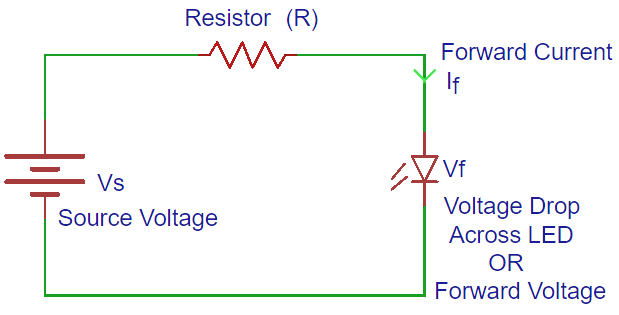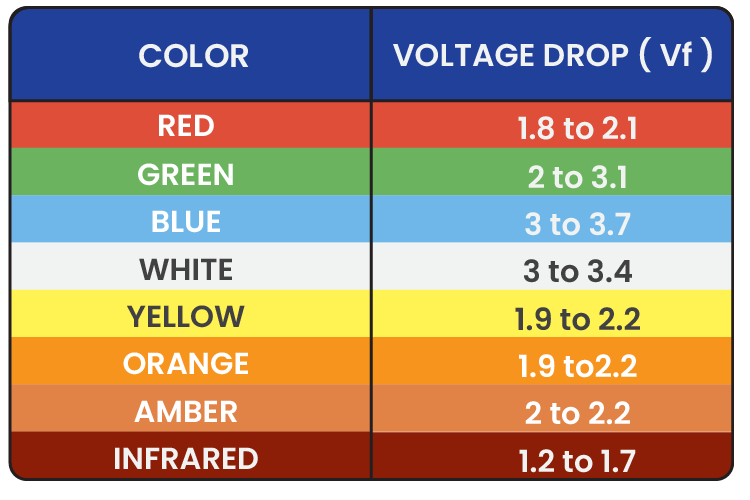Use this LED resistor calculator to find out the suitable resistance for your LED circuit consisting of one or more LEDs.
Working of LED Resistor Calculator
Every LED has its own characteristics and specifications, depending on the materials used to make them, their colour and many other parameters. As we know the LEDs have a forward voltage, just like any other diode. To turn them on we need to supply the LEDs with a voltage a little bit higher than this forward voltage.
If the applied voltage is high, then the current through the LED can increase and potentially leading damage the LED or reduce its lifespan. So to maintain a stable operation and prolonged lifespan, we must control the amount of current that flows through the LED. The easiest and cheapest way is to place a current limiting resistor in series with the LED to control the current, preventing it from exceeding the maximum rated current.

This LED resistor calculator will help you to pick up a right value of resistor for the LED in your LED circuit, you just have to input the values of Source voltage (Vs), LED forward current (If) and Led forward voltage (Vf).
The forward voltage or voltage drop across the LEDs can vary depending on the colour of the LED because of the different types of materials used in manufacturing. The chart below shows the typical forward voltage of different coloured LEDs.

Equation
To find the value mathematically you can use the equation below:

Where,
Vs = Source voltage measured in volts.
Vf = LED forward voltage or voltage drop,if you don’t know the voltage drop of your led then you can use 2v as it is the typical value for an LED’s voltage drop.
If = LED forward current, if you don’t know LED forward current of your led then you can use 20mA as it is the typical value for an LED’s forward current.
N = Number of LEDs to be connected in series.

